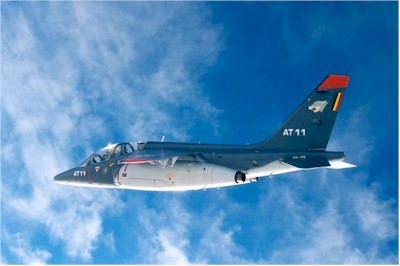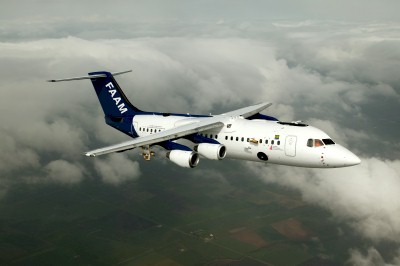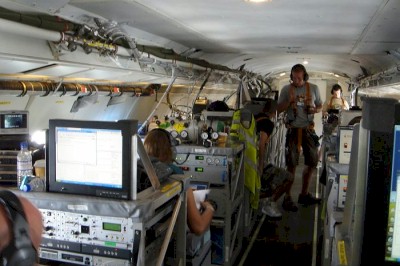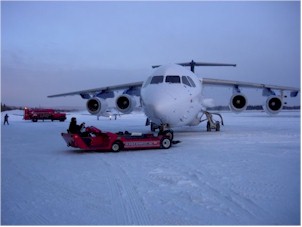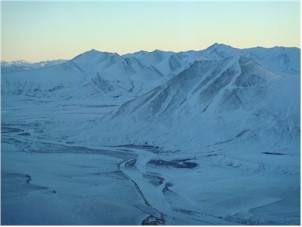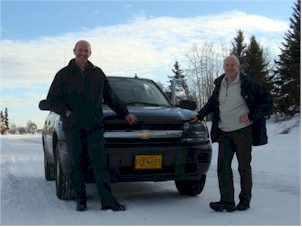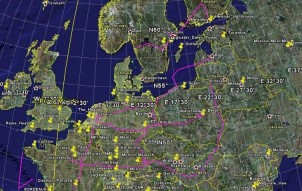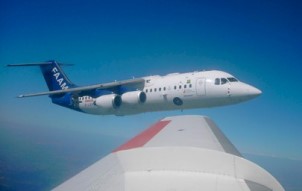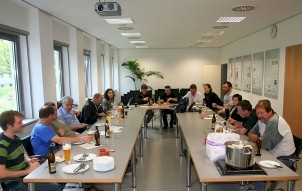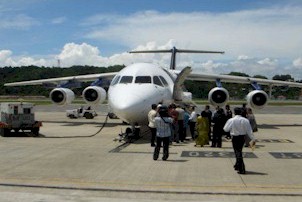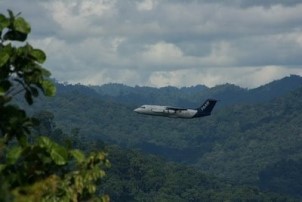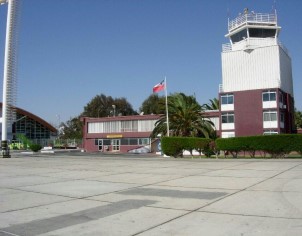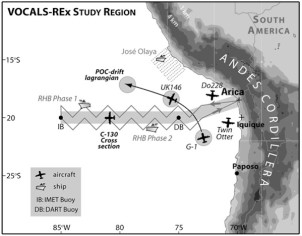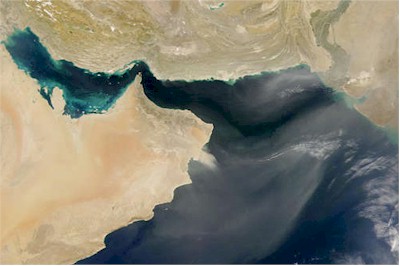|
Former Belgian military pilot as saver of our planet. |
A question to start with.
A brief past history.
Tempting civilian career.
Atmospheric Research Aircraft, yes.
Very diverse campaigns, everywhere.
CLPX-II.
EUCAARI.
OP3.
VOCALS.
MEVEX.
CAVIAR.
Some additional reflexions.
Question-marks become notes of exclamation.
A question to start with.
It is unusual to start a story with a
question. It is therefore our intention that as the script unfolds, the
curious reader hasn't to wait too long before he obtains a clear answer.
Let us firstly start with the question. What have the notions or acronyms
Muscat, MEVEX, CAVIAR and Latty in common? Right now we are already prepared
to reveal a part of our mystery. The last acronym is linked to a former
Belgian military pilot who after his retirement continued to use his
callsign Latty with a certain regularity till to-day during indeed very
exceptional flying activities, in a particular demanding and very professional and
scientific context, about verywhere on our globe.
Consequently, it is clear that Latty becomes the key player in this
narrative but with the necessary attention and admiration for the specific
missions and for the contribution of his present-day employers. A breath of past
history can probably suffice to typify the person in question.
TOP.
A brief past history.
The real name, hidden by Latty, is Luc Lathouwers. My first
acquaintance with Latty dates back to 4 March 1983 when I executed an
instruction flight, together with student pilot Luc in the Alpha Jet AT-13.
Being in charge of the management of all squadron-pilots of the Tactical Air
Force, it belongs to my task to verify also, in practice, the quality of the
training syllabi of the student pilots. The flight of 1.15 Hr executed at
high but also at low altitude illustrates clearly what is expected of a
student pilot during the advanced flying training. Although there exists at
that moment only one training-standard, namely to prepare all student pilots
for the transfer to Mirage or F-16, in principle only the best ones of the
class will man the cockpits of a fighter. During the debriefing of the
flight only a limited number of remarks are formulated. The student pilots
who fly as number 2 and 4 in the formation performed very proficiently. For
the number 1, the leader of the formation, and for the number 3, by
coincidence are not the base commander, the debriefing goes on with an
animated conversation in an adjacent room. Based on the produced decibels,
even little attentive listeners can easily conclude that some of the capers
of the number 1 at high altitude were not fully appreciated by his number 3,
what I could in fact fully but discretely confirm afterwards.
|
|
Indeed, the flying training of Latty goes swimmingly. He receives the so
much desired pilot wings, together with crown-prince Filip of Belgium, who
also rounds of successfully his flying training. However the young pilots
can not transit immediately to combat or transport aircraft. The respective
conversion units are overworked. After a supplementary stay of almost nine
months in Brustem, where they continue to fly on Alpha Jet, the dream for
Latty and for three of his colleagues finally comes true. They start their
flying training on F-16 in Beauvechain. In the OCU (Operational Conversion
Unit) they discover a new world. The answer on the question what is the most
striking memory of this period is very spontaneous: "We are absorbed very
well by Toutou and his mates. This is the first time that we really are
treated op an equal basis."
After the conversion on F-16 Latty rejoins the 349 Squadron, well-known in
air force midst amongst other things as the squadron that was created with
Belgian pilots during the Second World War in the United Kingdom. More
recently the 349 Squadron was also the home of the Belgian astronaut Frank
De Winne, who in 1999 during the NATO operation Allied Force above the
Balkans was the first and only Belgian pilot who was in command of the Belgian-Dutch
Deployable Air Task Force. In May 2009 Frank becomes indeed also the first
European commander of the International Space Station ISS.
Latty will stay in his 349 Squadron at Beauvechain till 1993 where he
becomes the operations officer and where he obtains the highest and most
demanding qualifications of a modern fighter pilot on F-16. Then the moment
has come to take up a new challenge. He prefers to rejoin the 15th Transport
Wing at Melsbroek in order to fly on a transport aircraft. During a period
of five years the cockpit of his new working-horse, the C-130, will be his
working-environment. During the first two years as a co-pilot and three
years after that as a captain, he will traverse the airspace of all the
continents. But the charm of the civilian aviation is becoming rather
fascinating. The new boss of SABENA, Reutlinger, wants that his megalomania
after the order of 34 Airbus aircraft, becomes by all means a success story.
Consequently there is an urgent need for pilots, many pilots to handle all
these control columns in the cockpits. In co-operation with the then
minister for Civil Service André Flahaut, his colleague of Defence Poncelet
concludes a very attractive contract. At the age of forty years every
military pilot with the necessary qualifications, - with full pension that
at the earliest would start five years later -, can subscribe to the
wage-sheet of SABENA or one of her subsidiary companies. The blood-letting
of experienced pilots inside the 15th Transport Wing is considerable. The
tempting voice of financial and other advantages is irresistible for Latty
and for a lot of his colleagues. The era of the military aviation is hereby
closed.
In order to be complete, we have to mention that the military career of
Latty started in 1976. Indeed, in the same year he started his training as
aircraft mechanic at the Technical School of Saffraanberg. After the
obtention of his diploma we find him consecutively as specialist in the
Section Engines where he maintains the engines of the Fouga Magister and of
the Alpha Jet and as crew chief on the Fouga Magister in Brustem. The daily
contact with the pilots is for him the stimulus to take the chance to become
a pilot as well. No sooner said than done, and with flying colours.
TOP.
Tempting civilian career.
In 1998 a new episode starts in the flying career at DAT (Delta
Air Transport), that as subsidiary company of SABENA, - after the dramatic
bankruptcy of the latter in 2001 -, is absorbed by SN Brussels Airlines.
Meanwhile Latty accumulates a lot of flying experience on the BAe 146
four-engined whispering jet and becomes holder of the most important flying
qualifications.
In the course of 2007 his attention is triggered by an advertisement in
Flight International, a magazine that belongs to the preferred reading of
many aviation enthusiasts. Directflight
Limited,
a specialist operator with the airport of Cranfield in the United Kingdom
(UK) as home base, is in search of a pilot who fulfils special qualifications.
He has to accumulate a lot of experience on the BAe 146 in order to fly a
unique specimen of this machine. The flights will take place between 50 feet
(15 metres) above sea level, 250 feet (76 metres) above land up to a maximum
flying altitude of every BAe 146 that amounts to 35.000 feet (10.668 metres).
A special requirement is also to fly in formation with aircraft of the same
calibre. Flying operations are scheduled from airfields spread out all over
the world and this during a few deployments per year, lasting every time
nearly a month. Throughout the whole year the majority of the other flying
activities takes place from Cranfield.
An experience as a military pilot is a bonus, without any doubt. Add to that
the acquired expertness on the BAe 146 and it doesn't take too long before
the ideal candidate is found. Consequently Latty becomes without hesitation
as only "non-UK-er" a team member of Directflight Limited.
The special qualifications of the pilots working for Directflight Limited ask for
some clarification. It will guide us slowly but surely towards the complete
answer on our earlier formulated question.
TOP.
Atmospheric Research Aircraft, yes.
The remarkable requirements to be authorized to fly a specific
aircraft are without any doubt linked to the special mission of the aircraft
itself. This is indeed the case. The aircraft that is the pivot on which
everything hinges in the whole story, is the only BAe 146 brought into
action as Atmospheric Research Aircraft or ARA.
BAe Systems
provided the aircraft. After an extensive modification to the special task
of atmospheric research, it was put into use in 2004 in succession of the
C-130 Snoopy who was not suitable any more for his task.
Directflight Limited
operates the machine under contract to BAe Systems and on behalf of the
Facility for Airborne Atmospheric Measurements or
FAAM who in turn is run by the Natural Environment Research Council or
NERC and the Met Office.
The mission of the NERC illustrates clearly the comprehensive possible tasks for
the ARA. "Our vision is to advance knowledge and understanding of the earth
and its environments to help secure a sustainable future for the planet and
its people." Research of our atmosphere somewhere on our planet,
weather patterns, climate change, the global warming, this all together
elicits a clew of questions that preferably can be answered better sooner
than later in a reassuring way.
|
|
It is not our intention to describe the BAe 146-301 Large Atmospheric
Research Aircraft G-LUXE in detail.
This very complete,
clear and convenient description of the aircraft doesn't require really
any further comment. Summarized we feel first of all obliged to applaud the
generous gesture of BAe to make available an ARA, who in our story had to be
modified extensively in order to be capable to execute with success the very
varied scientific research. Internally as well as externally the upgrading
is significant. Adapted flying instruments are indispensable for the really
special flying environment. The available space in the fuselage is filled
up with complex equipment, necessary to support the scientific work. It has
to be noted that very often specific apparatus are installed in function of
the kind of scientific task. Also the exterior undergoes a lot of
modifications. Air intakes, protruding air sampling and sensing devices and
even small ejection hatches for probes are installed all over the aircraft
and give it to some extent a military look.
This detailed description
speaks for itself. On board of the aircraft there is room for 20 persons in
total, a crew of 3 individuals and a team of maximum 17 scientists.
Very diverse campaigns, everywhere.
CLPX-II.
In order to create a clearer picture of the real work of our
ARA-captain Latty and of the whole organisation, we could maybe illustrate
briefly the recent campaigns in which our ARA was in action about everywhere
on our globe.
Firstly we have to point out that very detailed information, about every
ARA-campaign, is available for the public. The FAAM website is really a
delight. Every deployment of the BAe 164-301 is elucidated by a determined
schema. Thus we find here
the
report of the pre-visit specifying all
findings necessary for the activities of the
ARA
above Alaska early 2008. The Cold Land Processes Experiment (CLPX-II) took
place from 13 February till 5 March 2008 together with American scientists
out of Fairbanks International Airport.
The
CLPX-II manual explains
abundantly clear the course of the flying operations with amongst other
things the detailed description of the missions. The manual provides also
all necessary information to live and to survive in the severe circumstances
of the polar winter. Furthermore, the same website offers the opportunity to
follow on a daily basis the execution of the missions, inclusively the flown
routes. CLPX-II aimed to improve the weather-forecasts in the north-pole
region. During specific periods of the day simultaneous observations were
compared of the ARA, a team on the ground in tracked vehicles and the
overflying meteorological satellite. The processing of the observations in
specialized centres in the United States (US) and in the UK should
contribute to the development of better weather models thanks to the
fine-tuning of the commonly used algorithms.
|
|
|
|
The experiences inside and outside the cockpit can indeed be considered as
exceptional. A temperature on the ground of about 40° Celcius below zero in
Fairbanks, where the labour-intensive snow removal is a daily task, where
take off and landing is executed on tamped snow, where the clear and pure air is
the synonym of an unlimited visibility in flight, where not a single trace
of life is observed (even not a polar bear according to Latty) during the
flights of about 5 hours sometimes at a height of about 300 metres above the
terrain up to roughly 600 miles from the north pole, where indeed the
aircraft is the means of transport par excellence and where the refueling of
the BAe 146-301 is possible in a remote place like Barrow. It are all
exceptional experiences whereby the capability and the skill of the pilot in
the cockpit contribute in a significant way to bring the challenge of
exacting scientific work in a sometime really threatening flying and living
environment to a happy conclusion.
TOP.
EUCAARI.
Another campaign, this time a little bit closer to home, took
place from 5 till 23 May 2008. The European Integrated Project on Aerosol
Cloud Climate and Air Quality Interactions or EUCAARI was programmed this
time. The airfield of Obpfaffenhofen in South-East Germany became now the
home base. Once more
this
information bulletin provides a wealth of data about the scientific
project and about the employment of our ARA and of other aircraft. Flights
are executed at low and high altitude while crossing the borders.
Flying in the dense European airspace following scientific selected routes
ask in the cockpit a high dose of attention. The missions at low altitude in
between the mosaic of civilian and military airfields, of zones of military
training areas, of other restricted zones, together with air traffic of slow
movers like gliders and light motorized aircraft, it asks all for special
attention in particular outside the cockpit.
|
|
|
|
A particularity of the European airspace is also the fact that the flying
activities of the ARA are not identically catalogued by all countries. Some
require a timely publication of a Notice To Airmen or Notam. For others a
simple flightplan is accepted. This European divergence of view causes of
course a lot of supplementary administrative bother and certainly when
during the same mission different countries are overflown.
TOP.
